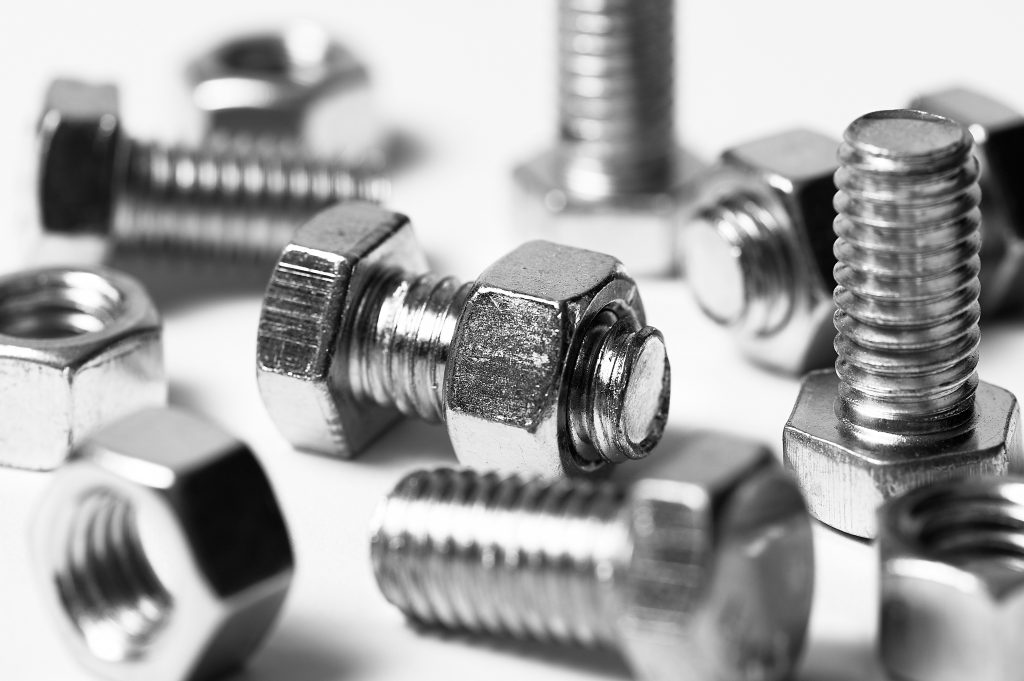caTEGORIES
Tags
Top Strategies to Maintain Screws for Long-Lasting Durability

Posted: July 16, 2024
Categories: News
When delving into effective strategies for ensuring screws have long-lasting durability, it is essential to prioritize the quality and dependability of the fasteners used. Qewitco Fasteners Co., Ltd. stands as a model of excellence in this field, providing an extensive range of superior fasteners and fixings designed to meet a variety of industrial requirements.
Established in 2004, Qewitco has consistently dedicated itself to producing and trading premium, consistent quality products. The company’s operational principles, heavily influenced by its ex-British owners and directors, have proven invaluable in the supply chain management of industrial consumable products from mainland China and surrounding countries, including Taiwan, Malaysia, Vietnam, and Thailand. This blend of Western business acumen and Far Eastern value ensures that Qewitco can deliver exceptional products and services to its global clientele.
Qewitco‘s competitive product range includes fasteners of general grade, high grade, and those made from brass/copper, stainless steel, aluminum, and various alloys. The provision of test certificates, coupled with rigorous professional quality control and traceability, underscores the company’s unwavering commitment to excellence. This dedication to quality is paramount for maintaining the integrity and durability of screws in various applications.
Importance of Regular Screw Maintenance
Regular maintenance of screws is vital to ensure their continued performance and long-lasting durability. Over time, screws can undergo wear and tear due to various environmental factors, usage conditions, and material fatigue. By maintaining a consistent schedule of inspections and upkeep, you can prevent potential failures and enhance the operational longevity of the screws used in different applications.
Understanding Screw Wear and Tear
Factors such as exposure to moisture, chemical reactions, and physical strain influence screw wear and tear. Corrosion can occur in moist environments, while excessive use might lead to stripping or deformation. It’s crucial to identify the underlying causes of wear to implement appropriate preventive measures. Understanding what contributes to screw degradation is essential for selecting the right materials and maintenance techniques suited to the screws’ operational environment.
Identifying Common Screw Issues
Several common issues can affect the integrity of screws, including corrosion, stripping, and loosening. Corrosion often results from exposure to harsh environmental elements and can significantly weaken the screw structure. Stripping usually occurs when the screw head or threads are damaged, making it difficult to drive or remove the screw. Additionally, screws might loosen over time due to vibrations or inadequate fastening. Recognizing these issues early on can save significant repair costs and prevent potential malfunctions.
Proper Techniques for Inspecting Screws
Employing proper inspection techniques is fundamental for maintaining the longevity of screws. Being thorough in both visual and detailed examinations can identify issues before they escalate into larger problems.
Visual Inspection Best Practices
Visual inspection is the first step in identifying potential issues with screws. Begin by closely examining the screw’s surface for any signs of rust, corrosion, or discoloration, which indicate environmental damage. Pay attention to the screw head and threads, checking for wear, deformation, or stripping. Regular inspections should be scheduled based on the usage environment and the frequency of the screw’s application to catch any faults early.
Using Tools for Detailed Examination
To achieve a more thorough examination, specialized instruments can provide detailed information about the state of screws. These instruments assist in identifying less obvious or internal problems that might be overlooked during a visual inspection.
Magnification Tools
Magnification tools, such as magnifying glasses or microscopes, allow you to see fine details of the screw’s surface that are not visible to the naked eye. These tools are useful for inspecting miniature or precision screws used in intricate assemblies. They can help spot micro-fractures, subtle deformations, or early signs of rust.
Torque Testing Devices
Torque testing devices are employed to assess the holding power and strength of screws. These devices check whether the screws are adequately tightened and can measure the torque levels required to loosen or tighten screws. Regular torque testing ensures that screws are performing optimally and have not loosened due to vibrations or stress.

Cleaning and Lubrication Methods
Effective cleaning and lubrication are essential in maintaining the performance of screws. Cleanliness prevents the accumulation of debris and corrosive elements, while proper lubrication reduces friction and wear.
Appropriate Cleaning Solutions
Choosing appropriate cleaning solutions is essential for maintaining the quality of screws. Generally, mild solvents or soapy water are adequate for eliminating dirt and grime. However, screws subjected to more extreme conditions might require specialized cleaning agents to break down persistent contaminants. Always verify that the chosen cleaning solutions are compatible with the screw material to prevent any chemical reactions that could weaken the screw’s integrity.
Recommended Lubricants for Different Environments
The choice of lubricant varies based on the operational environment of the screws. General-purpose lubricants, such as silicone-based oils, are suitable for standard applications where moisture and temperature variations are minimal. For high-temperature environments, heat-resistant lubricants should be employed to prevent degradation. In marine or highly corrosive settings, anti-corrosion lubricants provide additional protection. Regular lubrication minimizes friction, prevents rust, and extends the lifespan of the screws.
Ensuring that screws maintain their structural integrity and performance over time requires a proactive approach. Regular inspections, appropriate cleaning, and proper lubrication collectively contribute to the long-lasting durability of screws. By adhering to these maintenance practices and selecting high-quality fasteners from reputable suppliers like Qewitco Fasteners Co., Ltd., you can significantly enhance the reliability and longevity of screws in diverse applications.
Preventative Measures to Extend Screw Lifespan
In maintaining the long-term durability of screws, adopting various preventative measures can significantly mitigate potential issues. These measures focus on selecting the appropriate materials, considering environmental factors, and applying protective coatings to enhance screw performance.
Choosing the Right Screw Material
Choosing the appropriate material for screws is crucial to their durability. Different materials provide varying degrees of resistance to wear and environmental conditions. For example, stainless steel screws are highly valued for their rust and corrosion resistance, making them perfect for damp environments. Conversely, brass and copper screws are ideal for situations that require high conductivity and resistance to tarnishing. Recognizing the specific requirements of your application guarantees that the selected material meets both operational needs and anticipated environmental conditions.
Environmental Considerations and Protective Coatings
Environmental considerations play a critical role in screw maintenance. Screws exposed to harsh conditions, such as marine environments or high-temperature settings, require additional protective measures. Applying coatings like galvanization, anodization, or specialized rust inhibitors can significantly enhance screw durability. These coatings serve as barriers against corrosive elements and physical wear, extending the lifespan of screws considerably. Regular reapplication and inspection of coatings are equally important to sustain their protective properties.
Addressing Specific Types of Screws
Different types of screws require unique maintenance approaches based on their applications and materials. Focusing on the specific needs of wood and metal screws ensures that each type receives optimal care.
Maintenance Tips for Wood Screws
Wood screws are commonly used in carpentry and construction. To maintain their performance, it is crucial to ensure they are not over-tightened, as this can lead to stripping or breaking of the wood fibers. Regularly check for signs of loosening, as wood can expand and contract with humidity changes, potentially affecting screw tightness. Applying an anti-seize compound can also prevent screws from binding in the wood over time, making removal easier without damaging the surrounding material.
Care Guidelines for Metal Screws
Metal screws, frequently utilized in industrial settings, need particular attention to avert corrosion and deterioration. Consistent inspections for indications of rust or pitting are crucial, particularly in environments where temperatures vary or there is exposure to moisture. Applying suitable lubricants can reduce friction and wear. Additionally, ensuring that metal screws are not exposed to excessive torque during installation can avoid threading problems and extend their service life.
Recognizing When to Replace Screws
Despite diligent maintenance, there will be instances when screws must be replaced to maintain safety and functionality. Recognizing the signs of wear and understanding the consequences of ignoring degradation are essential for timely intervention.
Signs of Wear That Indicate Replacement is Necessary
Identifying signs of screw wear early can prevent larger mechanical failures. Look for visible rust, corrosion, or discoloration, as these are clear indicators of environmental stress. Additionally, if a screw shows any signs of deformation, stripping, or if it can no longer hold its position firmly, it is time for a replacement. Regularly auditing the screws used in critical applications can ensure that potential issues are addressed before they escalate.
Consequences of Ignoring Screw Degradation
Ignoring the degradation of screws can lead to severe consequences, including compromised structural integrity and operational failures. In industrial settings, this can result in costly downtimes, safety hazards, and potentially catastrophic equipment failures. By staying vigilant and being proactive in replacing worn or damaged screws, you can maintain the safety, efficiency, and reliability of your mechanical assemblies.
By following these detailed maintenance practices and sourcing high-quality fasteners from trustworthy suppliers, the longevity and effectiveness of screws can be greatly improved. Routine inspections, choosing the right materials, and taking preventive actions are crucial in guaranteeing the enduring functionality of screws in a range of applications.


